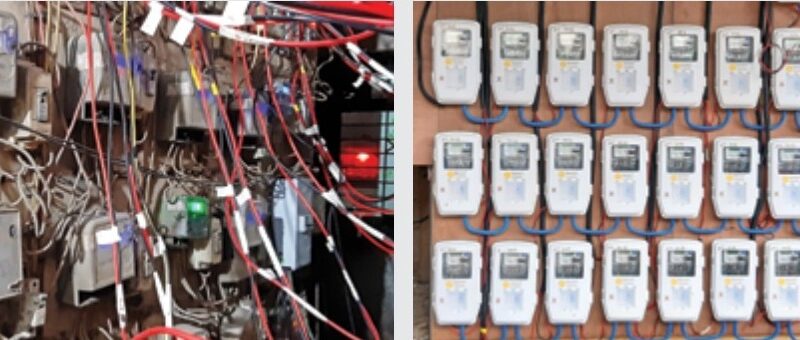According to information recently tabled in Parliament, a preliminary study shows that India’s AT&C losses have climbed down to around 17 per cent in FY22 from around 22 per cent in FY21. This is based on information filed by 56 state government-owned discoms that account for more than 96 per cent of the country’s total input energy.
The decline in AT&C losses has resulted in a reduction in the gap between Average Cost of Supply (ACS) and Average Realizable Revenue (ARR). The ACS-ARR Gap (on subsidy received basis, excluding Regulatory Income and UDAY Grant) has declined from Rs.0.69 per kwh in FY21 to Rs.0.22 per kwh in FY22.
It is well known that India has targeted to restrict its AT&C losses to below 15 per cent, and as such, the performance in FY22 augurs well towards this goal.
The Union power ministry has said that the decline of 5 percentage points in AT&C losses and Rs.0.47 in the ACS-ARR gap in one year is the result of a number of initiatives taken by the ministry that includes among other things revision in the prudential lending norms of the two leading financial institutions – PFC and REC. Discoms that need financing will need to commit to an action plan, endorsed by the respective state government, to reduce AT&C losses within a timeframe. Discoms that are seeking funding under the Rs.3-trillion RDSS will also need to adhere to a time-bound loss reduction trajectory.
All said, over the past two decades, the Central government (with different leaderships) is doing much to extricate state discoms from the financial mess that they are in. One must bear in mind that electricity is not a purely “Union” subject. It is more of a “State” subject with Central intervention merited only in deserving cases. However, it appears that most states tend to take Central support for granted. It is high time that state governments take full responsibility of their power value chain – most importantly the distribution part – and work towards resurrection.
Free electricity, or highly subsidized electricity, has traditionally been a popular political plank but there should be serious rethinking on this matter. Mobile telephony is a prospering business and has extremely deep penetration even in the lower socio-economic class. The idea of “free mobile telephony” would sound absurd even to the lower social rung that is happily paying for the service.
India’s per capita power consumption is way below the global average. There is huge demand for electricity – across all social strata – without any condition precedent of “free power”. Given this, power distribution can be an extremely profitable business but only if seen from a business perspective and not a political one.
(The author of this article, Venugopal Pillai, is Editor, T&D India. He may be reached on venugopal.pillai@tndindia.com.)

